The first in a new VIF lecture series ‘Understanding Indian History & Civilisation’ was a talk on ‘Dharma and Ecology’ by Dr. Pankaj Jain, Associate Professor, Department of Philosophy & Religion, University of North Texas, USA. Dr. Arvind Gupta introduced the speaker and presented the issue at hand: In an age of intense competition and drive for profit, how can ideas developed in ancient Indian culture be brought into the modern discourse? It is high time that philosophy and history step out of their shells and work at an interface with strategic affairs.
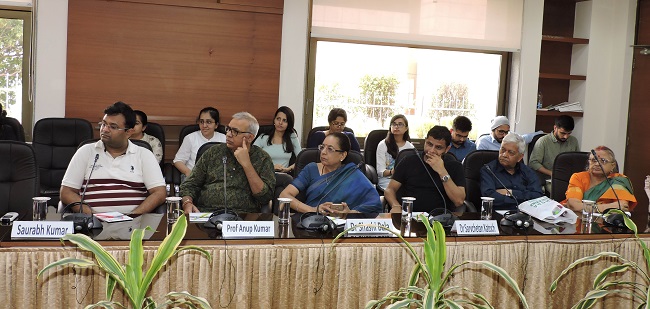
Dr. Jain’s lecture demonstrated precisely how ancient Indian ideas are applicable to modern times in the context of environmental activism. He presented findings from his first book Dharma and Ecology of Hindu Communities: Sustenance and Sustainability, the Indian edition of which has been published in 2017. His talk revolved around the contribution of the Bishnoi community and the Swadhyay movement towards environmental conservation.
The speaker started by challenging Lance Nelson’s (mis)interpretation of Adi Sankara’s statement
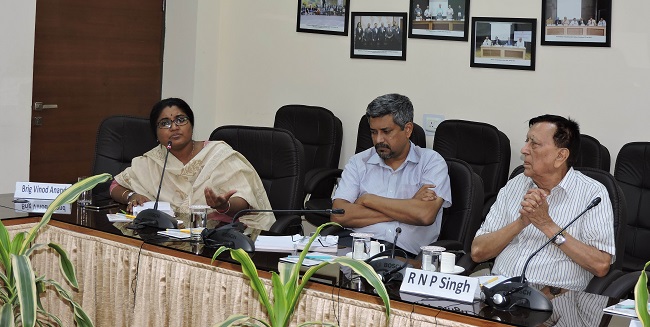
By contrast, Ann G. Gold has argued based on her study of Rajasthan that the God that Indian villagers accept and worship is not the same as the Abrahamic God, and that the villagers understand the inter-connections within the cosmic order, between human beings and animals, and so on. Dr. Jain argued that proto-environmentalist ideas are already present in Indian religious culture.
The Bishnois are people who worship Vishnu in his nirguna aspect. The sect was founded by Guru Jambeshwar (1451-1536) and the community lives mainly in Rajasthan and also in parts of Haryana, Delhi, Madhya Pradesh and Odisha. The sect originated around AD 1485 when there was a wide-spread drought and Jambeshwar had a mystical experience. He founded the sect with 29 rules and 120 statements. For the Bishnois, ‘dharam’ included four principles: (1) protecting the environment; (2) personal hygiene; (3) spirituality; and, (4) personal and social values. According to Dr. Jain, while the last two elements are common between the Bishnois and any other religious communities, the first two are very unique to the Bishnois (the emphasis on personal hygiene in this context is unique given the rule for daily bath in a dry state like Rajasthan).
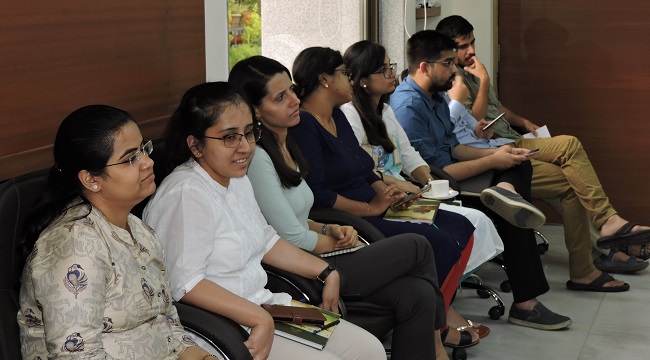
The Bishnois believe that it is the same divinity which exists in us that also exists in trees and animals. In a very loose sense, this is same as the Advaita Vedantic position of oneness of Existence. The Bishnois practiced water harvesting. In AD 1730, a Bishnoi woman became a martyr by embracing a khejri tree which was about to be cut down. To this day, there is an award in her name — the Amrita Devi Award for wildlife protection.
The Swadhyay Movement took shape in Maharashtra in 1942. It is a devotional movement founded by Athavale, who was a scholar of Hindu scriptures. This new movement involved devotional visits, ocean worship, water harvesting, and setting-up of socio-spiritual shrines, dairy industry, tree-temples, and farms of God. This is based on the same teaching of indwelling divinity in all. Athavale taught that nature is for upasana (worship), not upayoga (use) and upabhoga (enjoyment). He also taught ‘chhod me ranchhod ko dekhna’ (to see Krishna [ranchhod] in trees [chhod]). They set up tree temples or vriksha mandir. The important fact is that the followers of this movement do not consider themselves environmentalists; they feel that any environmental benefit that the movement has wrought is only a by-product of their devotional attitude towards the world. Having said that, however, the followers of this movement have initiated many important activities such a recharging of wells (125,000) and harvesting water in ponds (1000).
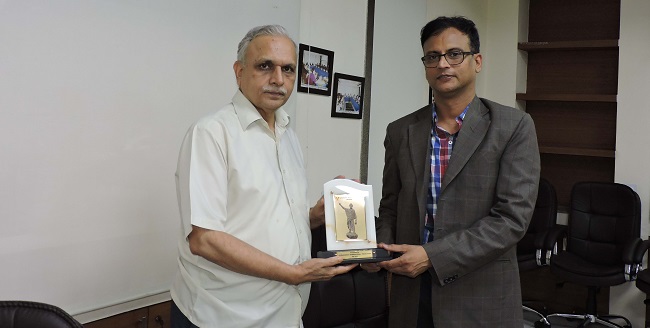
Dr. Jain argued that the scope of dharma is wide so as to include religious, spiritual, moral and environmental concerns. In a sense, he pointed out, sannyasa or renunciation of one’s own needs is also a sustainable act, the result of which is the reduction of carbon footprint in the world. Indians had anticipated much of what is known today as eco-feminism, Gaia hypothesis and so on. Indian carbon footprint is less than that of Brazil for example, and the reason for that is a certain kind of worldview that is still prevalent among Indians, especially in villages. One of the reasons for the relatively less carbon footprint in India is also vegetarianism; Indians do not consume meat in as large quantities that it is done in America especially. Dr. Jain also discussed briefly about the contribution of Jainism for safeguarding the environment.
The talk was followed by a lengthy and stimulating round of discussion. Some of the issues that were flagged were as follows:-
- The future conflict in the arena of International Relations will be environmental. It is time to think of the issue of security (both national and international) and the environment, and of what India can offer in this respect.
- Many scholars have always quoted selectively from Indian spiritual dictums. For example, the remaining part of the verse ‘brahma satya jagat mithya’ is ‘jivo brahmaiva na parah’ (individual souls are nothing other than brahman), which clearly indicates immanence of divinity; it is not a world-negating attitude. Similarly, the Gita too has many verses to the effect that the one who can see his own self in others and others in his own self truly sees. In that case, it has also been our failure that we could not create such an education that any child could stand up and say that claims like Nelson’s are wrong.
- Self-awareness also means a complete self-awareness, where one is aware of one’s shortcomings as well. In this context, it is important to explore what India can possibly rectify in herself and also learn from others. In response to this issue, the speaker unequivocally pointed out that the worldview of Indians is such that in a natural process India produces less carbon footprint, be it for vegetarianism or other mental attitudes and lifestyle-related habits. The culture in America is, by contrast, based on a use-and-throw lifestyle that is hardly sustainable form an environmental point of view.


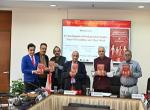


Post new comment